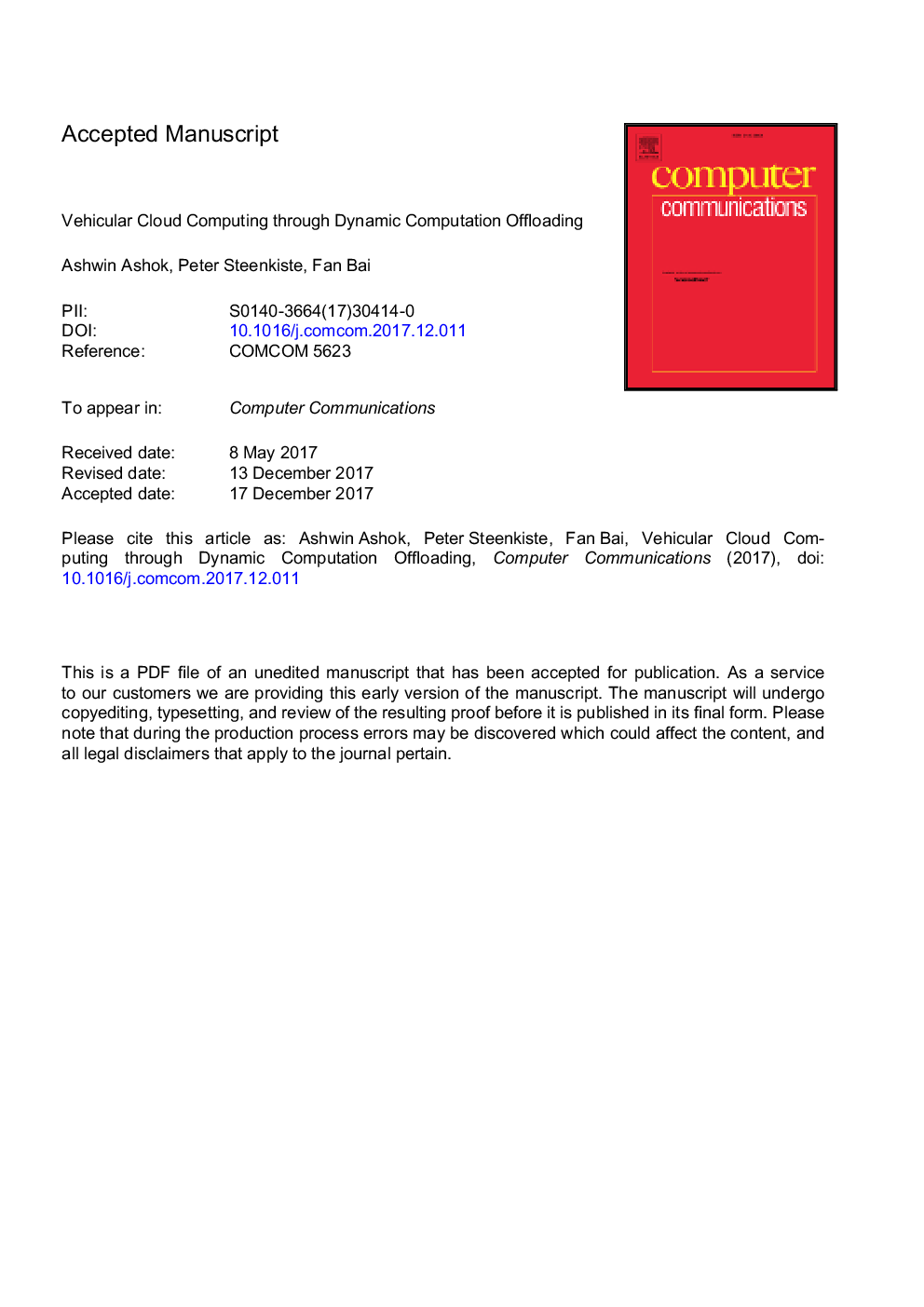ترجمه فارسی عنوان مقاله
ابر رایانه وسیله نقلیه از طریق تخلیه پویا محاسبات
عنوان انگلیسی
Vehicular Cloud Computing through Dynamic Computation Offloading
| کد مقاله | سال انتشار | تعداد صفحات مقاله انگلیسی |
|---|---|---|
| 155742 | 2018 | 34 صفحه PDF |
منبع

Publisher : Elsevier - Science Direct (الزویر - ساینس دایرکت)
Journal : Computer Communications, Volume 120, May 2018, Pages 125-137
ترجمه کلمات کلیدی
وسیله نقلیه، پردازش ابری، تخلیه، آزمایش، تعیین سطح، برنامه ریزی، زمان واقعی تخصیص منابع پویا، برنامه تعاملی،
کلمات کلیدی انگلیسی
Vehicular; Cloud computing; Offloading; Experiments; Placement; Scheduling; Realâtime; Dynamic resource allocation; Interactive application;

